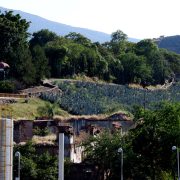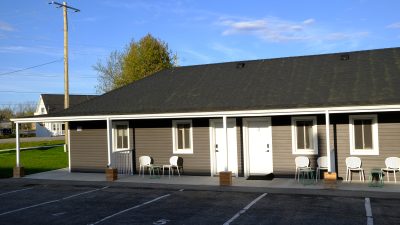While there is public transportation, it is scheduled to accommodate the locals and their regular work days. As such, it does not reach all points of interest, runs infrequently, and not very late. While there are several tour operators offering their daily sightseeing tours they average at about $75+ EUR per person for a 4-hour/half-day tour and well over $100 EUR for an 8-hour/full day. Having a limited budget we wanted to maximize our experiences and have the freedom to see and do things at our own pace, hence, (as per multiple TripAdvisor suggestions) we rented a car.
The Azores operate on standard transmission vehicles so, if you thought you’d ever want to pick it up as a skill, now is the time – Europe does not do automatic. While driving a small standard car might not seem like a challenge, driving it in the Azores is. The islands are very hilly, roads are usually very narrow, especially in larger cities, and quite often even the GPS gets confused.
Speaking of GPS, rental cars don’t come with these and you’ll need to pay extra if you want to be able to find your way around (or even figure out where you are on occasion). If you already own a GPS unit you can purchase a set of maps for it and, thus, further save yourself quite a bit of money. For about $60 CAD we found on Amazon an “All of Europe” set of maps on an SD card for our Garmin Nuvi GPS unit. GPS rental in the Azores runs about $50 EUR per day and you will want to have a GPS if you’re making your own way around these seemingly deserted islands.

If you’re like us and are used to twelve-lane highways, driving in the cities on the Azores islands will probably be challenging and frustrating. The roads are predominantly cobblestone, generally averaging 18% slope, barely-enough-space-for-two-small-cars-to-get-by narrow thus seeming like a one-lane street with two-way traffic (so avoid renting full-size or larger vehicles on your trip). Most importantly, you know those spacious sidewalks allowing the driver a clear view of the surrounding environment and the upcoming cross-road intersections? They don’t have them in the Azores. The city roads there are more like narrow pedestrian alleys between buildings with doors opening directly into the street with people coming out of walls before they suddenly materialize in front of the car. Warped hidden-driveway-type mirrors are usually your only way to see if it’s safe to proceed through an intersection.
Driving outside of the cities provides a different set of challenges. It’s just a paved path (well, mostly paved) through the mountains, frequently zig-zagging up and down the hills, an abyss on one or both sides of the said path, and cows crossing it will stop in front of the car and stare at you for a while before sauntering up or down the steep hill and out of your way. I can’t speak for what it’s like driving in the tourist season, but in April it is frequently rainy and foggy. Clouds get “stuck” between the mountain peaks and you get the unique experience of quite literary driving through the clouds. These clouds are often the rain storm kind where you don’t really see where you’re going, don’t see the sides of the narrow road you’re on, nor where the said road might suddenly end.
More photos can be found on Flickr here and if you are on Instagram the trip was also documented with the #XOAzores hashtag.

































































